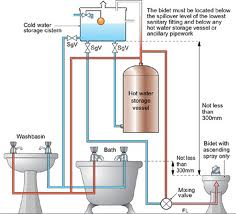- Joined
- 27 Jan 2008
- Messages
- 23,695
- Reaction score
- 2,670
- Location
- Llanfair Caereinion, Nr Welshpool
- Country

I would say the first electrician should have tested the immersion heater and should have ordered up the new part and/or made safe and passed to a plumber.
I will accept that faults to thermostat, cut out, or clock may not be apparent until the element is changed.
So the following should be order of events.
One electrician visits and disconnects supply and passes job to plumber.
Two plumber changes the element.
Three electrician reconnects and changes any other faulty pats.
So you should get two bills
Plumbers bill to change element.
Electricians bill two visits one to disconnect supply and test should all be done with standard call out charge often one hour and second maybe two hours and cost of replacement parts.
If it takes three visits to work out the element has gone then you should only be charged for one visit and the company should be asking the electricians what they were playing at.
I have been in that position and have needed to call the electricians into the office and adjust the customer bill. In some cases I had to admit it was my fault for sending the wrong electrician for the job.
As foreman one can be conned and electricians can make you thing the customer is at fault. Any foreman is human and having a customer complaining can mean you go into defensive mode. So it does need some care on your part and to visit rather than phone seems to work better.
I will accept that faults to thermostat, cut out, or clock may not be apparent until the element is changed.
So the following should be order of events.
One electrician visits and disconnects supply and passes job to plumber.
Two plumber changes the element.
Three electrician reconnects and changes any other faulty pats.
So you should get two bills
Plumbers bill to change element.
Electricians bill two visits one to disconnect supply and test should all be done with standard call out charge often one hour and second maybe two hours and cost of replacement parts.
If it takes three visits to work out the element has gone then you should only be charged for one visit and the company should be asking the electricians what they were playing at.
I have been in that position and have needed to call the electricians into the office and adjust the customer bill. In some cases I had to admit it was my fault for sending the wrong electrician for the job.
As foreman one can be conned and electricians can make you thing the customer is at fault. Any foreman is human and having a customer complaining can mean you go into defensive mode. So it does need some care on your part and to visit rather than phone seems to work better.



